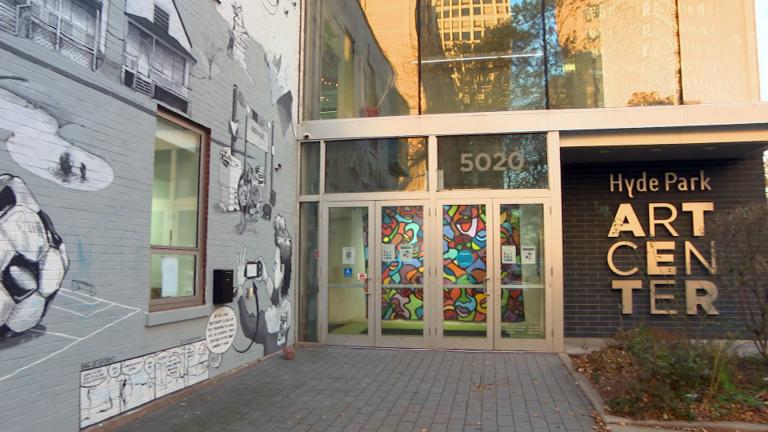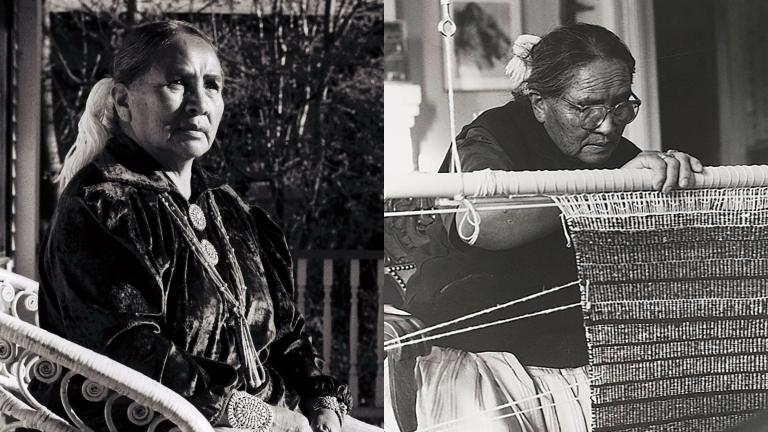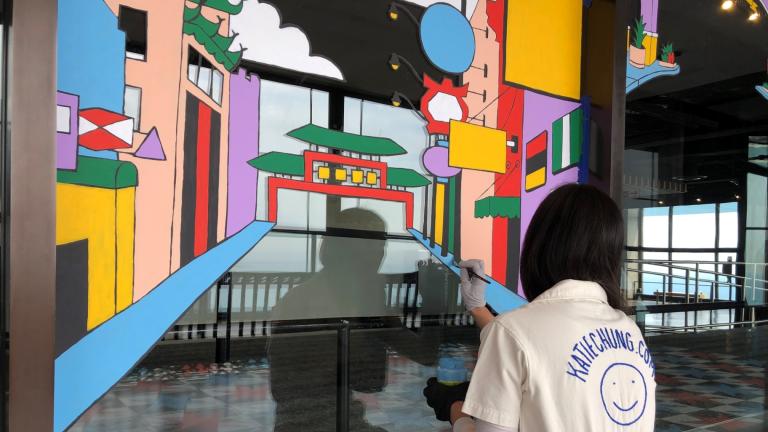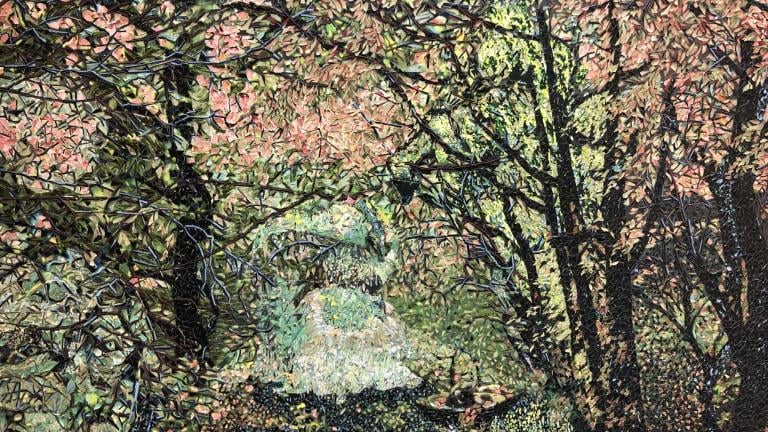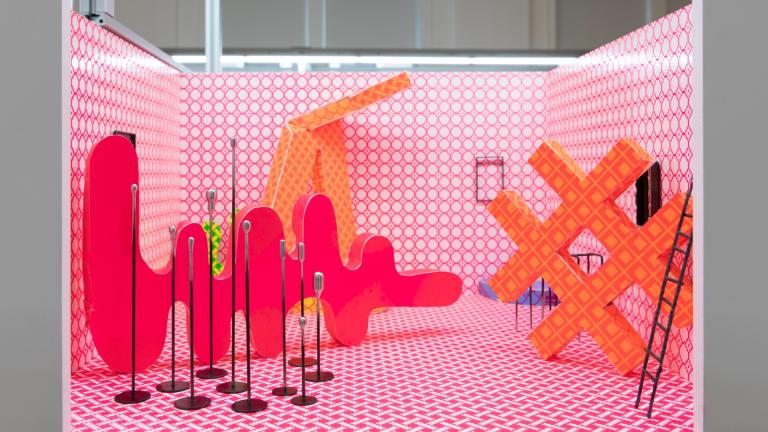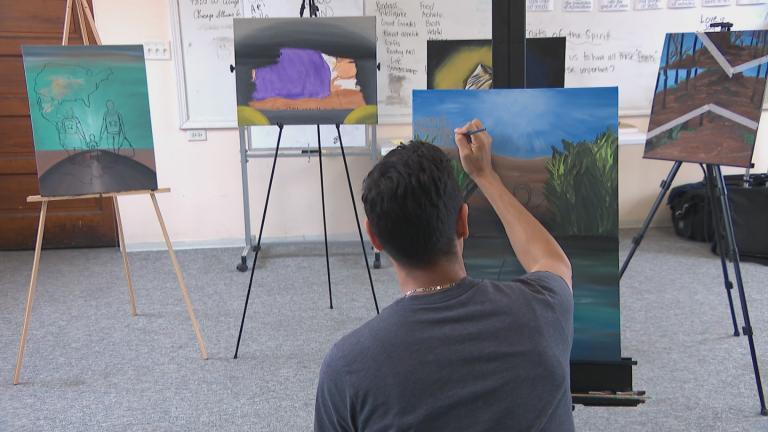 Left: Untitled work by Christina Ramberg, 1971. (Stewart Clements Photography) Right: “Probed Cinch” by Christina Ramberg. (Courtesy of the Art Institute of Chicago)
Left: Untitled work by Christina Ramberg, 1971. (Stewart Clements Photography) Right: “Probed Cinch” by Christina Ramberg. (Courtesy of the Art Institute of Chicago)
“Christina Ramberg: A Retrospective” places an important, underappreciated Chicago artist where she clearly belongs — in the Modern Wing of the Art Institute of Chicago. It’s the first full survey of Ramberg’s work in the nearly 30 years since her untimely death.
Christina Ramberg made unsettling, voyeuristic images. In early paintings, female figures are bound by corsets and lingerie that suggest bondage or fetish gear. The distorted figures are human yet vaguely abstract. They might suggest fractured emotional states, constraint as a metaphor, or the artist’s thoughts on body image.
Ramberg’s cropped compositions leave much to the imagination with what they don’t show. The imagery contains figural elements such as hands, torsos, locks of hair and clothing — mysterious fragments of unrecognizable people. Even her palette is constricted, featuring muted grays, blacks and browns.
Like so many Chicago artists of the 1960s and ‘70s, Ramberg had an omnivorous approach to source material. She found inspiration in pop culture, comic books, Frederick’s of Hollywood catalogues and even a BDSM magazine bluntly titled “Aggressive Gals.”
Ramberg also collected outsider art and took trips to the Maxwell Street Market. At the School of the Art Institute, she was a student of the influential professor Ray Yoshida and his “trash treasure” aesthetic of finding beauty in discarded objects. She later became a beloved teacher at the School of the Art Institute and the first woman to chair the Department of Painting and Drawing.
Her artwork evolved in surprising ways. In one stunning suite of paintings, humanoid figures are shaped out of odd pieces of colorful clothing.
All of this becomes even more interesting when you learn that Ramberg was over 6 feet tall. She had to make some of her own clothing and special-order shoes for her big feet. The artist literally stood out among her peers.
 “Hair” by Christina Ramberg, 1968. (Kris Graves)
“Hair” by Christina Ramberg, 1968. (Kris Graves)
The exhibition also features examples of her work as a collector, diarist and photographer. Later works include gorgeous quilts and abstract shapes, perhaps a blueprint of where she might have gone if she had lived longer.
In 1989, Ramberg was diagnosed with a rare neurodegenerative disease. She died in 1995 at the age of 49.
Ramberg is identified with the creative cohort known as the Chicago Imagists, although she once told a reporter that “We hate the word (Imagists) and all other limiting, neat definitions.” She co-organized the famous False Image shows at the Hyde Park Art Center in 1968 and 1969 and told the Chicago Daily News that the group was “interested in the effects gained by withholding information.”
This Art Institute exhibition contends she had a well-formed artistic vision at a young age, and she kept building on those ideas. She pursued, she once said, a “coherent visual statement,” and her success in that goal is evident across three galleries in the Modern Wing.
Ramberg maintains a presence in Chicago. Many of the works here are on loan from local collectors, and her artwork is represented by the Chicago gallery Corbett vs. Dempsey. At the Art Institute, the scholarship was led by curators Thea Liberty Nichols and Mark Pascale.
“Christina Ramberg: A Retrospective” runs through Aug. 11, so fair warning, it will be long gone by the time it makes the “Best of the Year” lists that come out a few months later.
The exhibition is part of Art Design Chicago, a citywide collaboration initiated by the Terra Foundation for American Art that highlights the city’s artistic heritage and creative communities.
 “Waiting Lady” by Christina Ramberg, 1972. (Jamie Stukenberg)
“Waiting Lady” by Christina Ramberg, 1972. (Jamie Stukenberg)

